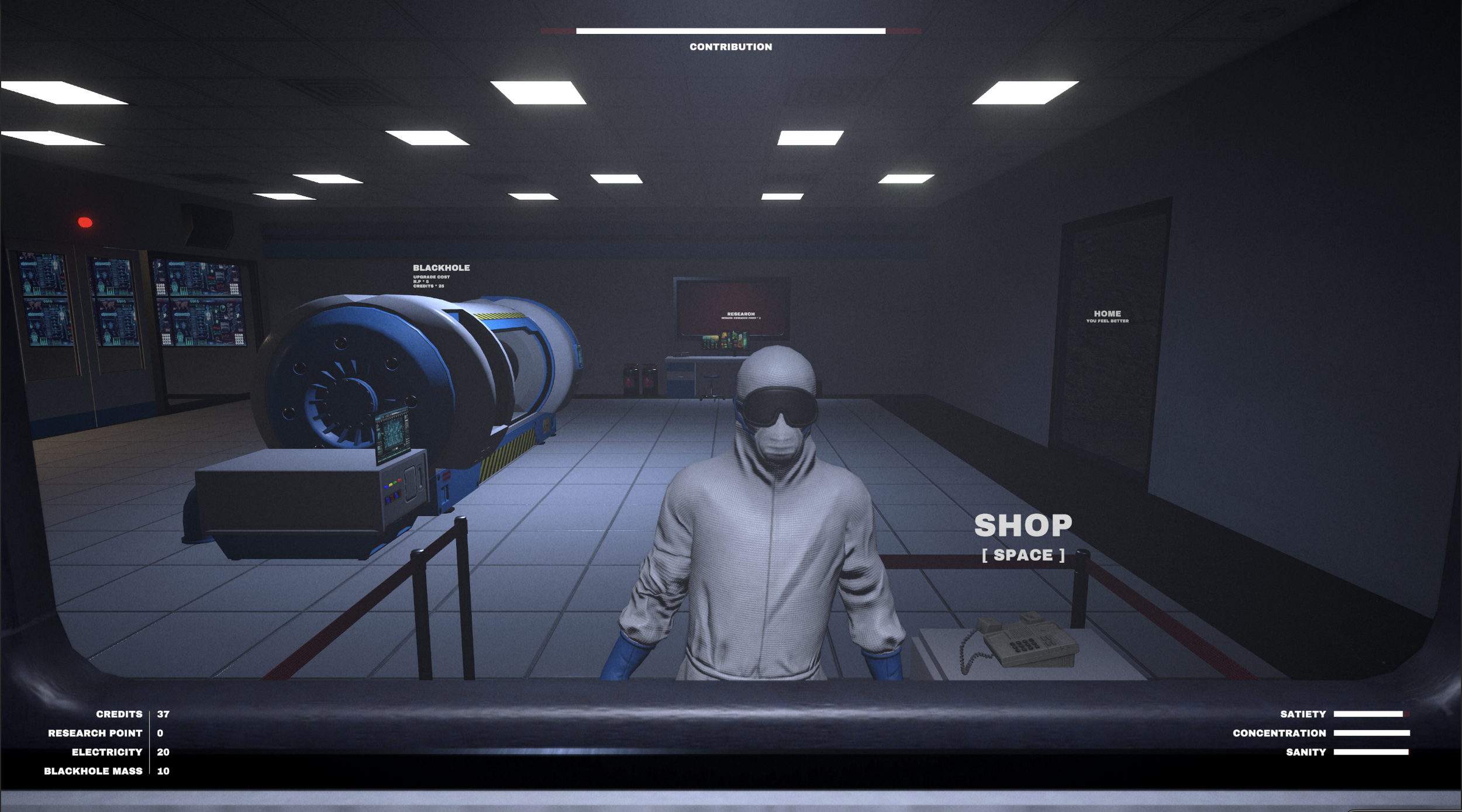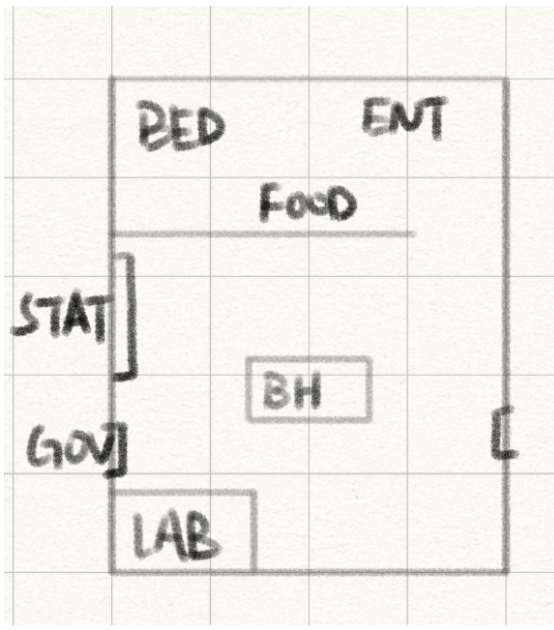THE ABYSS MOON
An experimental incremental game featuring a fixed camera perspective and tank-style controls.
As a scientist trapped within a black hole research facility on the Moon, you are forced to work under surveillance, balancing the demands of scientific progress with the fight for personal survival.
Your worth is judged by the increasing mass of the black hole — and to succeed, you must skillfully manage limited resources between advancing research and sustaining yourself.
Gameplay
Maintaining the scientist’s health and stability is crucial to advancing research and growing the black hole’s mass, which in turn generates credit points.
Players can spend these credits on vital supplies or experiment optimizations, creating a continuous core gameplay loop.
Design Goals
This project explores the design boundaries and possibilities of incremental (idle) games by using black holes as the central theme.
Unlike traditional incremental games, which typically rely heavily on simple clicking interactions, this game seeks to break that limitation by incorporating more active and engaging mechanics.
Additionally, the game emphasizes a survival-oriented experience:
I intentionally raised the difficulty of the resource and value loops, creating a gameplay progression where players will gradually find themselves trapped in increasingly demanding and high-frequency operations.
The goal is to combine the satisfaction of incremental growth with the tension and pressure of survival management, pushing the traditional boundaries of the incremental genre.
Design Challenges
In traditional incremental games, straightforward numerical feedback is essential for maintaining player engagement.
However, this genre typically relies on simple interaction logic; introducing a player-controlled character risks disrupting that logic, as players might lose a clear, intuitive sense of progress and actionable goals.
To address this, while maintaining a minimalist and cold visual design language, I enhanced the UI layer to provide stronger guidance.
Players can easily track their resources and immediately identify interactive objects, ensuring that the game remains readable and navigable despite the added complexity of character control.
Design Process
After consolidating the game’s core design pillars — space, black holes, and survival — I chose to set the game environment in a lunar space research facility, emphasizing themes of loneliness, surveillance, and cold isolation.
The environmental design plays a crucial role in this project. I needed to embed the incremental gameplay systems directly into tangible objects within the scene, while constructing a convincing world narrative for the laboratory setting.
The diagram shows the initial layout of the laboratory. It is divided into two main zones: the Research Area and the Living Area, reflecting the two major gameplay systems — experimentation and survival.
Unfortunately, due to the project’s three-week development timeframe as a solo endeavor, I was unable to complete the implementation of the Living Area.
In the Research Area, the centerpiece is the Black Hole Experiment Device (BH), for which all collected resources are used to sustain. Surrounding it are the Store (GOV) and the Lab Table (LAB), where players can purchase items and generate research points, respectively.
To further experiment with gameplay dynamics, I drew inspiration from early Resident Evil titles, adopting a fixed-camera system to limit player view freedom and strengthen the connection between gameplay and spatial navigation.
Players must manage three primary attributes:
Satiety
Concentration
Sanity
These attributes decrease during research activities and over time, requiring players to interact with objects in the environment to maintain healthy status levels.
In addition, players manage three key resources:
Contribution Points
Research Points
Credit Points
These resources can be spent on advancing black hole research, upgrading experimental devices, or purchasing supplies from the store.






